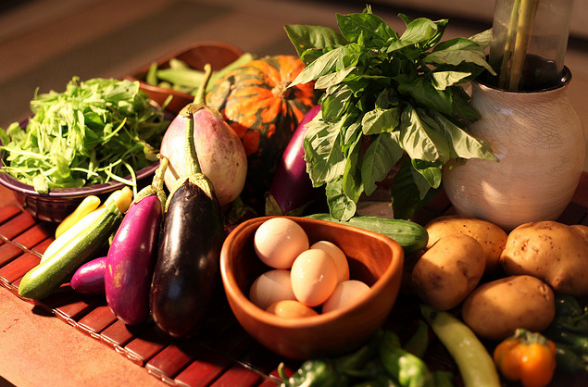 After my recent post on menu planning and sharing my current two week grocery shopping routine, I had several readers ask how I made my produce and perishable items (like dairy & bread) last for a two week period. Here are a few tips I have learned to make it work!
After my recent post on menu planning and sharing my current two week grocery shopping routine, I had several readers ask how I made my produce and perishable items (like dairy & bread) last for a two week period. Here are a few tips I have learned to make it work!
1. Use the more perishable produce items during the first week and save the more hearty produce during the second.
For example, we will use the softer produce, green beans, cucumbers, pears, grapes, etc during the first week and use more of the coniferous vegetables squashes, broccoli, carrots, potatoes, apples, oranges, and such for the second week. Pears and bananas usually take a week to ripen anyway, so they can be consumed later as well, depending upon their ripeness at time of purchase.
So in my menu planning, we will usually eat fresh salads, green beans, zucchini, carrot sticks, and such during the first week, with grapes, pears, bananas, and such for lunches, and then once that is consumed, we will eat squashes, broccoli, steamed carrots and other veggies with our dinners during the second week, and more apples and oranges for breakfasts and lunches. I also occasionally purchase some frozen produce (such as spinach, peas, and corn) during the second week as needed for fillers to throw into many meals. Many vegetables can be blanched and frozen to preserve them. This helps preserve the most nutrients. If you store the lettuce properly, we usually can still have fresh salads in the second week as well.
2. Store produce in airtight containers.
A general rule of thumb is that you can rinse and prepare your produce and store in airtight containers in the fridge to extend their life. For a full extensive list on this practice without using any plastic bags, check out: How to Store Vegetables & Fruit without Plastic. This helpful article explains how many vegetables can be stored wrapped with a damp towel or paper towel. I also have found green bags to be very effective in preserving produce in the past. They can be rinsed and reused many times.
Another effective method is storing a paper towel in a ziploc bag with your produce items (lettuce, cucumbers, zucchini, etc) and that helps absorb the extra moisture from the produce and prevent early spoilage.
A few tips on specific items:
Lettuce – I recommend buying lettuce in airtight sealed bags or plastic 1 lb bins, as this prevents the lettuces from perishing quickly. Many stores carry organic spring salad mixes in these bins, and I have found they last at least two weeks in the fridge, if not longer. Also, many stores sell lettuce in sealed bags that you don’t have to open until needed, which keeps them dry and preserved for much longer than just buying a head of lettuce.
If you choose to buy by the head, you can also rinse and dry your lettuces with a salad spinner. Allow to sit at room temperature for an hour or so until lettuce is completely dry before transferring to the fridge. Store in the airtight container until ready to use.
If my lettuce begins to spoil, I will simply throw it into a green smoothie, and nothing goes to waste!
Bananas – I find it best to purchase bananas in various stages of ripeness so they can be used throughout a two week period. If they start to fade and I cannot get to them, I will simply open them up, cut into small chunks, and stick in a ziploc bag in the freezer to use with smoothies on another occasion. This works really well.
Pears – I store pears on the countertop until they just start to get ripened and then I transfer them to the fridge in a paper bag to preserve them until they can be consumed.
Apples & Oranges – These store well in the same drawer together in the fridge. Apples do give off a gas that can cause other fruits to spoil more quickly, so it is best to keep one drawer for just apples and oranges, since oranges are not affected in the same way.
Berries - I buy all my berries in bulk during the summer time and then freeze them in ziploc bags to use throughout the year for smoothies. The key is not to rinse them until they are ready to be used otherwise they perish quicker in the fridge or clump together in a frozen mess in the freezer.
Onions – I keep these together with potatoes, winter squashes, and other vegetables and fruit that take time to ripen on a shelf in my kitchen. These can also be stored in the fridge to preserve them longer. I try to keep one or two in the fridge at all times, as the refrigeration process seems to eliminate the watery eye syndrome that is common with onions.
Celery - This can be stored upright in a jar with a small amount of water in the bottom to keep them fresh. Cut off the ends and store them by individual stalks. More often then not, I just keep in the original bag and it lasts just fine.
Mushrooms – I usually buy mushrooms by the pre-assembled package to help preserve them. Otherwise, store in a brown paper bag.
Bread- (Obviously, not produce item, but someone asked how I extend the life of my bread) Since we eat a fair amount of bread, I buy a dozen loaves of bread at a local discount organic bread store and store in the freezer and pull out as needed. This prevents any bread from getting moldy.
Milk – We go through about three gallons of milk every two weeks (we certainly could use more but we are also on a budget  . I usually buy raw milk for the first week and a half (since that is about as long as it lasts before going sour) and then a gallon of organic milk for the last portion. We just have to make sure we use it slowly but surely and not overindulge to make it last the full two weeks.
. I usually buy raw milk for the first week and a half (since that is about as long as it lasts before going sour) and then a gallon of organic milk for the last portion. We just have to make sure we use it slowly but surely and not overindulge to make it last the full two weeks.
Cheese & Butter- These two dairy items freeze very well, so I will buy my cheese in a 5 lb block and cut it into 1 lb chunks and place in ziploc bags in the freezer until needed. Butter can be stored in the original box and pulled out also as needed.
All other dairy products seem to last just fine for the full two week period.
Remember, it will take a bit of trial and error to figure out how much you will consume to make a twice a month shopping excursion work for your family. I know personally, it took me two or three tries before I really figured out how much we needed to eliminate quick trips to the store between the two week cycle. And that’s perfectly normal and okay. I also find it useful to make sure to plan in a extra buffer meal or two (sometime quick and simple (baked potato bar, cans of refried beans for quick burritoes) and dessert, for those impromptu guests and evenings when I just don’t feel up to making a big dinner.
For a complete guide on how to store all your produce, check out this excellent list.
{Photo Credit}
 Want a easy and delicious granola that can be eaten any time of the day? This is hearty and healthy and protein packed, to sustain you throughout your day. It is great with milk for breakfast, served with yogurt for a fruit salad bar, and mixed in with raisins and nuts for a crunchy trail mix. It is also my daily bedtime snack!
Want a easy and delicious granola that can be eaten any time of the day? This is hearty and healthy and protein packed, to sustain you throughout your day. It is great with milk for breakfast, served with yogurt for a fruit salad bar, and mixed in with raisins and nuts for a crunchy trail mix. It is also my daily bedtime snack! ![]() We love it. It can be sweetened as you prefer, but I love xylitol made from birch trees (rather than from corn as many brands are) because it doesn’t spike your blood sugar and tastes so yummy.
We love it. It can be sweetened as you prefer, but I love xylitol made from birch trees (rather than from corn as many brands are) because it doesn’t spike your blood sugar and tastes so yummy.

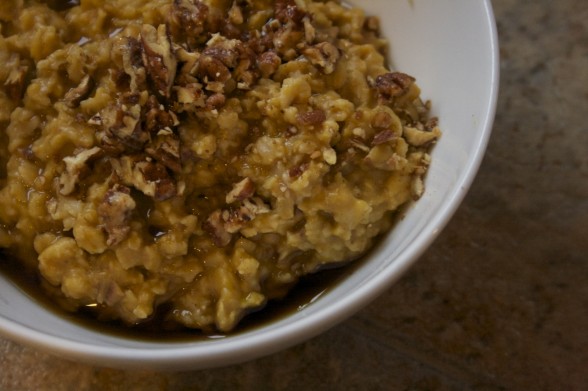 We eat oatmeal at our home about two to three times each week because it is cost effective, filling, and nutritious. But it can often get a little old without some fun variety here and there. With the fall season, pumpkin is a favorite flavor that adds a scrumptious taste to traditional oatmeal. It’s yummy, simple, and healthy!
We eat oatmeal at our home about two to three times each week because it is cost effective, filling, and nutritious. But it can often get a little old without some fun variety here and there. With the fall season, pumpkin is a favorite flavor that adds a scrumptious taste to traditional oatmeal. It’s yummy, simple, and healthy! After my
After my 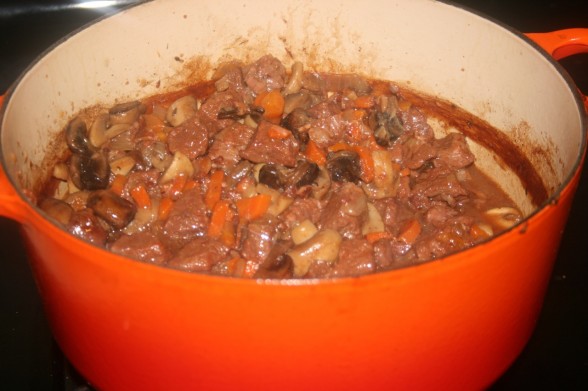
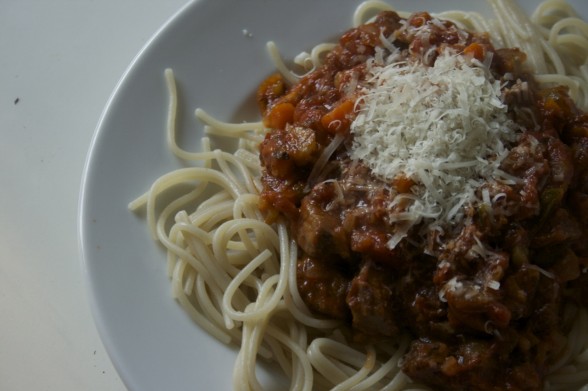 I love the Italian heritage that runs in my family and the immense flavors for delicious simple spaghetti sauce. It is perfect for a cozy fall night and a great means of concealing a lot of extra veggies in one place. Plus when you throw it all in the slow cooker or stove top and allow it to slowly simmer all day, the flavors mesh in amazing ways leaving you with a rich satisfying meal. You can add zucchini and carrots discreetly by simply finely chopping them before adding. I usually use a pound of ground beef or half ground beef and half sausage for a tasty addition. This last week I used stew meat and it was good. This is a family recipe that has been passed down through the years. You can’t go wrong.
I love the Italian heritage that runs in my family and the immense flavors for delicious simple spaghetti sauce. It is perfect for a cozy fall night and a great means of concealing a lot of extra veggies in one place. Plus when you throw it all in the slow cooker or stove top and allow it to slowly simmer all day, the flavors mesh in amazing ways leaving you with a rich satisfying meal. You can add zucchini and carrots discreetly by simply finely chopping them before adding. I usually use a pound of ground beef or half ground beef and half sausage for a tasty addition. This last week I used stew meat and it was good. This is a family recipe that has been passed down through the years. You can’t go wrong.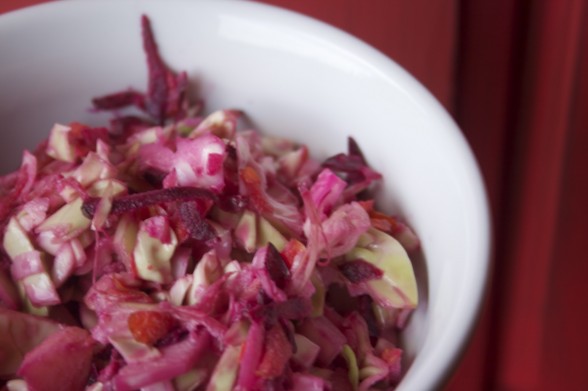 Delicious fresh in-season produce is widely available at the market right now and I have been exploring making a variety of new salads and dishes to consume them all. Coleslaw has been one of those long detested side dishes until I started making it at home. Homemade slaw can come in a variety of different flavors and ingredients, and this fun new experiment made a delicious salad that we enjoyed over several days time (since it is a large batch!). It is pleasantly sweet and full of rich nutrients and vitamins from the wide variety of vegetables combined in this slaw. And it’s a fun color, thanks to the inclusion of beets. If you prefer to avoid the pink color, eliminate the beets and you will still have a colorful slaw with orange, red, and green colors. If you have a food processor, it would help in whipping this up in a flash. This is a refreshing salad for a warm summer day!
Delicious fresh in-season produce is widely available at the market right now and I have been exploring making a variety of new salads and dishes to consume them all. Coleslaw has been one of those long detested side dishes until I started making it at home. Homemade slaw can come in a variety of different flavors and ingredients, and this fun new experiment made a delicious salad that we enjoyed over several days time (since it is a large batch!). It is pleasantly sweet and full of rich nutrients and vitamins from the wide variety of vegetables combined in this slaw. And it’s a fun color, thanks to the inclusion of beets. If you prefer to avoid the pink color, eliminate the beets and you will still have a colorful slaw with orange, red, and green colors. If you have a food processor, it would help in whipping this up in a flash. This is a refreshing salad for a warm summer day!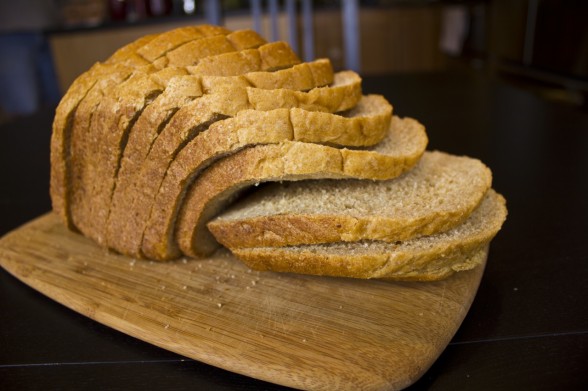 Guest post by Emily Benhase
Guest post by Emily Benhase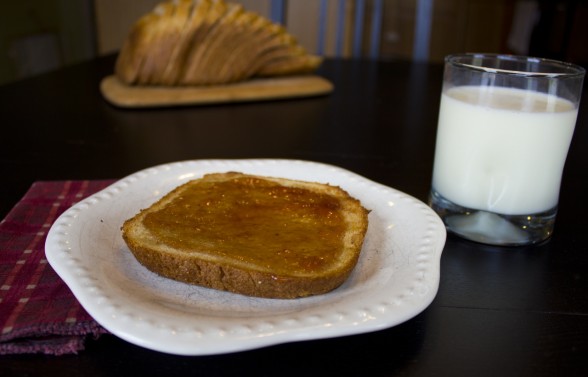

 Guest post by Kresha Faber at
Guest post by Kresha Faber at  Kresha Faber is the chief writer and blog editor at
Kresha Faber is the chief writer and blog editor at